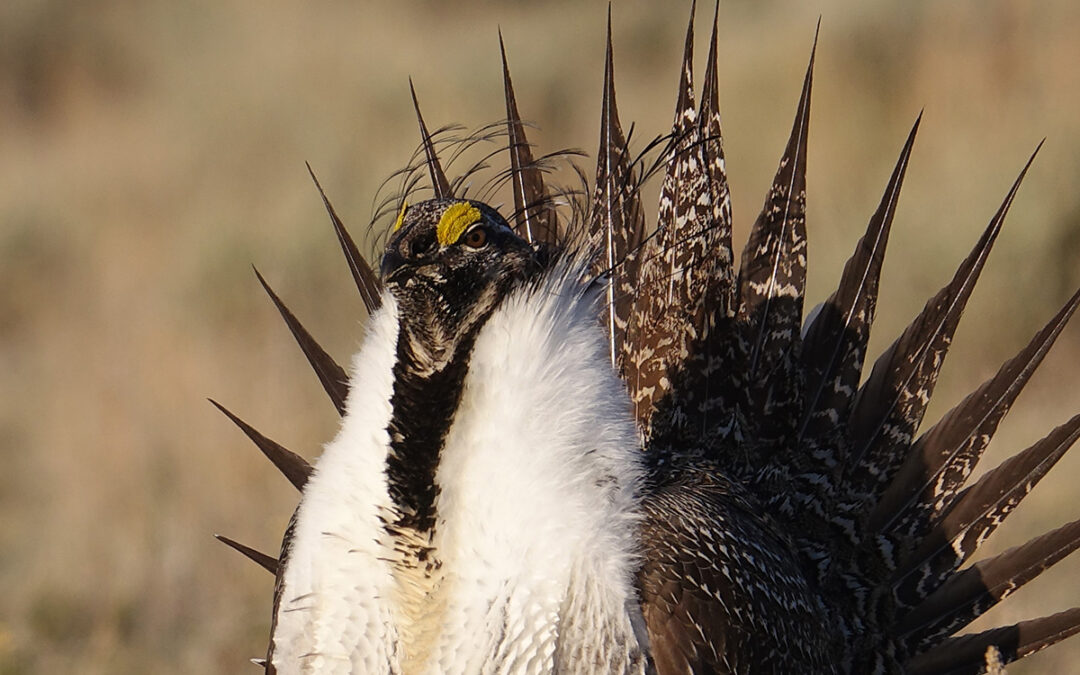The numbers don’t lie — and the sage grouse “collaborative conservation effort” is a total and on-going failure. There were 16 million Greater Sage Grouse before Europeans arrived and began the destruction of the “sagebrush sea” in the Great Plains. The iconic birds were down to 400,000 in 2015 when Obama’s Secretary of Interior, Sally Jewell, rejected listing them for protection under the Endangered Species Act. Today there are only 200,000 left, an astounding loss of half the remaining birds in less than a decade.
Yet, Biden’s Bureau of Land Management director, Tracy Stone-Manning, continues to deny the abject failure of the collaborators’ plan claiming: “Joint efforts to conserve the greater sage-grouse and its habitat led to the largest collaborative conservation effort in our history, and we are building on that work, together with our partners, to ensure the health of these lands and local economies into the future.”
No matter what election-year fiction Stone-Manning spreads about the great success of the collaborators’ plan, the reality is that sage grouse are staring extinction in the face as the Bureau of Land Management continues to cater to the cattle industry with on-going destruction of critical sage grouse habitat.
Between 1966 and 2015 sage grouse populations declined by 83%, according to the North American Breeding Bird Survey. The 2016 State of North America’s Birds’ Watch List classified sage grouse as “at risk of extinction without significant conservation actions to reverse declines and threats.”
In Montana, one of the last stands for sage grouse, their populations continue to plummet. The Montana Department of Fish, Wildlife and Parks estimated there were about 51,087 sage grouse in 2023, a huge loss from the 2021 estimate of 70,287 sage grouse.
It’s dismaying that Stone-Manning thinks the BLM is conserving healthy sagebrush habitat when the agency continues to clearcut native sagebrush-pinon-juniper habitat and build water developments for cattle on the agency’s grazing allotments.
Environmental assessments have recently been issued for two BLM cattle watering projects in southwest Montana in the Grasshopper and Medicine Lodge watersheds — the area where Lewis and Clark first met Sacagawea’s Lemhi Shoshone people when they came through Montana in 1805.
Yet, in spite of Stone-Manning’s claims, there is no mention of the sage grouse conservation plan in those environmental assessments. Nor was there any analysis as to how these additional water developments will impact sage grouse, a violation of the National Environmental Policy Act.
Despite BLM ignoring the issues, there are significant problems with building artificial water developments in sage grouse habitat. Cattle eat the vegetation sage grouse rely upon for hiding cover and to camouflage their nests from predators.
As detailed in one of BLM’s own 2023 reports, artificial water developments for livestock contribute to widespread increases in the number of ravens, which eat sage grouse eggs and chicks. Research by Coates et al. 2016 found a 45.8% increase of ravens in areas where livestock were present — and that stock tanks and water troughs provide an important source of water for ravens, especially in semi-arid environments.

The equation is clear: Ravens select areas near breeding locations of sage grouse because they hunt sage grouse eggs and chicks. As raven numbers increase, sage grouse nest survival decreases. When the BLM provides artificial water sources, the population of ravens increases, further diminishing reproduction of sage grouse.
Stone-Manning needs a reality check instead of ignoring well-documented impacts to sage grouse survival. In the case of the Grasshopper and Medicine Lodge watersheds, the agency should be discouraging ravens in sage grouse habitat by removing water developments and cows from sage grouse mating and nesting areas.
The data is indisputable: Slogans, false claims of success, and plans that are obviously not working will not restore Greater Sage Grouse. Stone-Manning and the agency she directs need to acknowledge that failure, follow the law and fully analyze the impact of their on-going livestock projects, and actually protect sage grouse habitat, not just talk about it.
These are the battles we face year in, year out and unfortunately, the destruction of sage grouse habitat has not stopped, nor even slowed, under the Biden administration. You can email director Tracy Stone-Manning and let her know the “collaborative conservation plan” is an abject failure. And please consider helping the Alliance for the Wild Rockies continue the fight to keep sage grouse and many other native species from going extinct.
Sincerely yours,
Mike Garrity
Executive Director of the Alliance for the Wild Rockies
